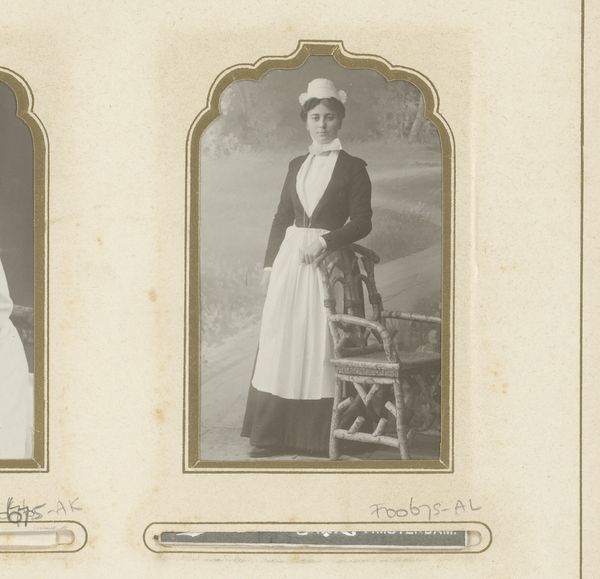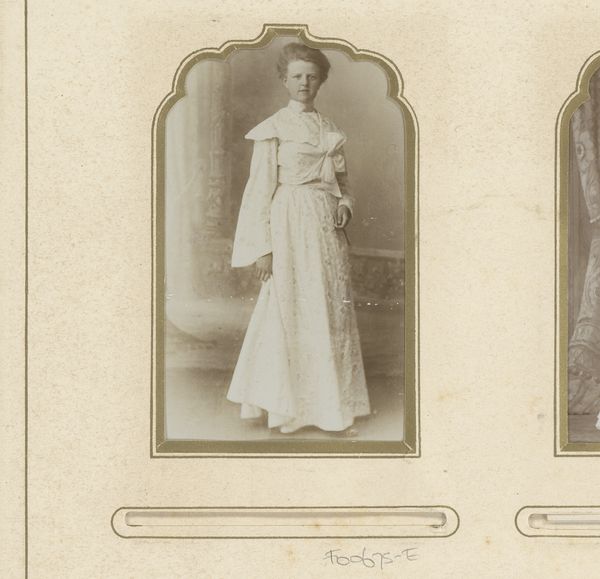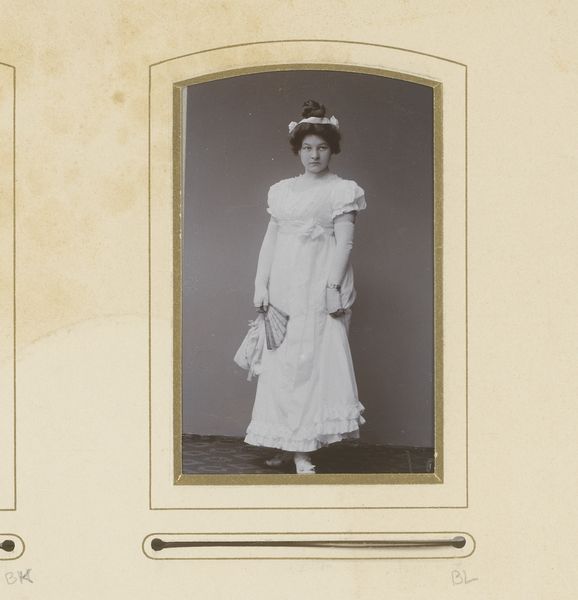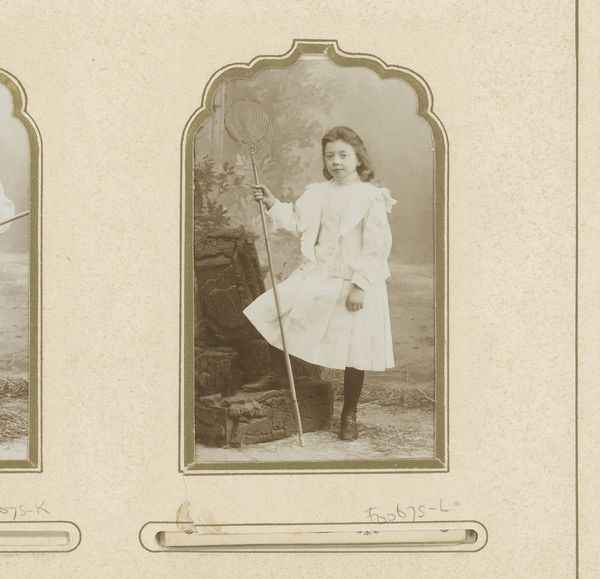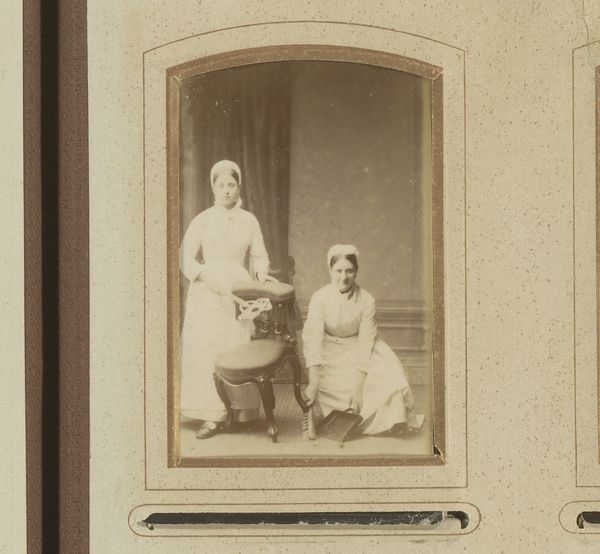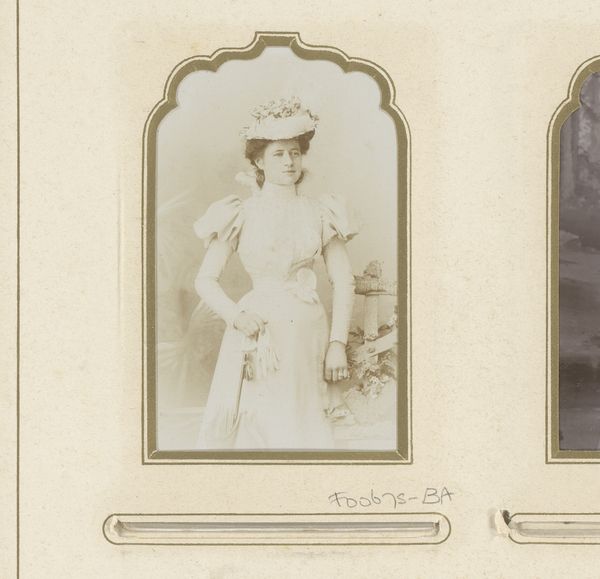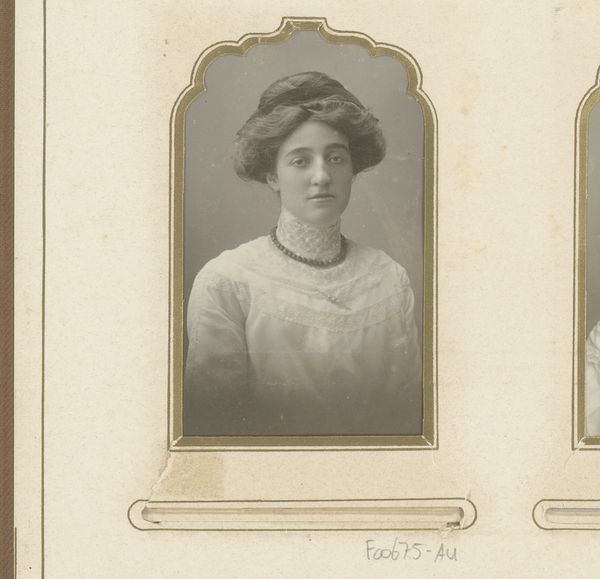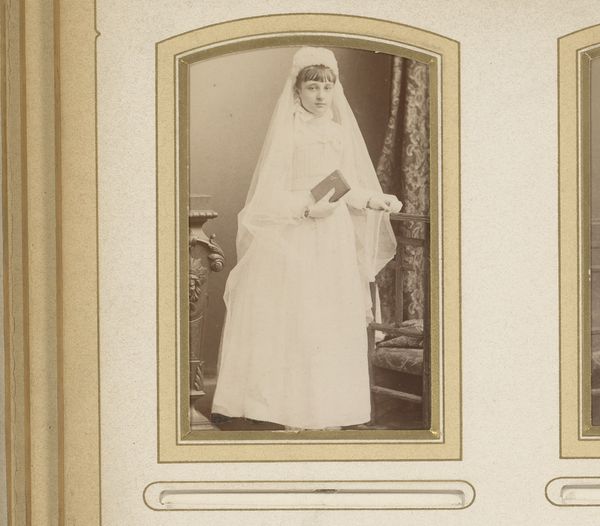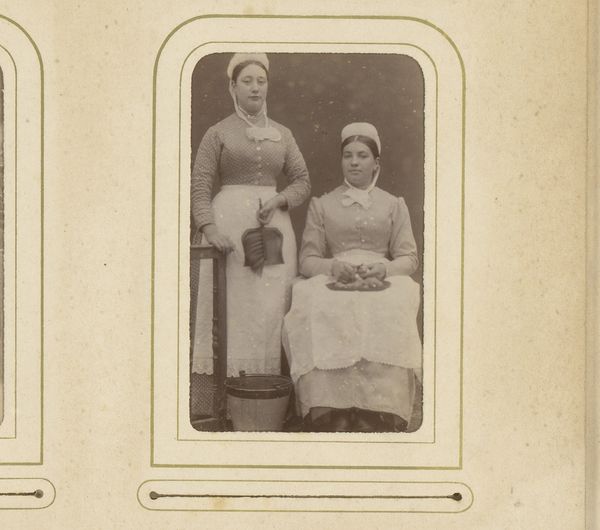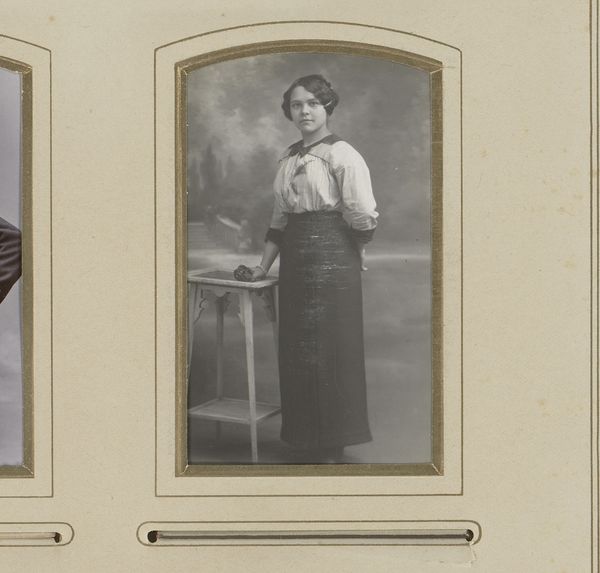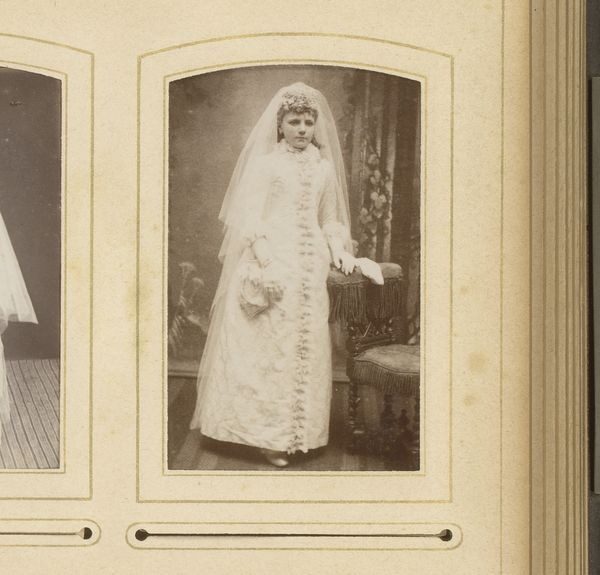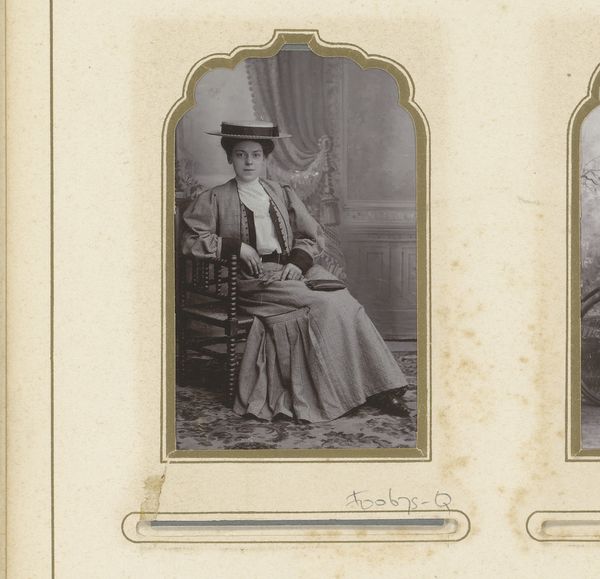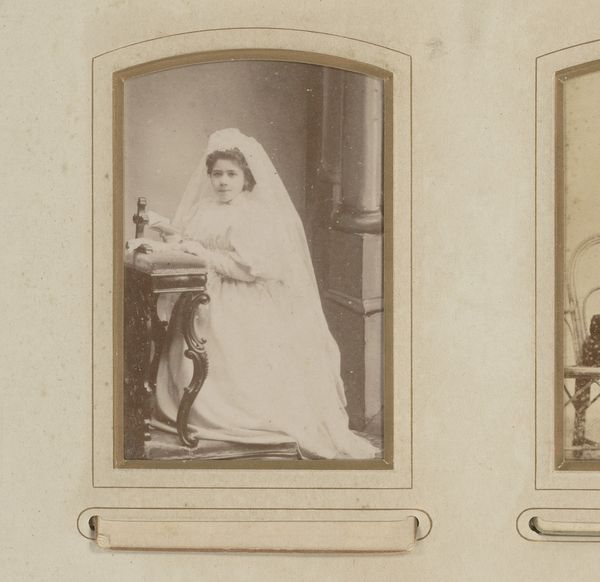
photography
#
portrait
#
pictorialism
#
photography
#
historical photography
#
19th century
#
genre-painting
#
realism
Dimensions: height 85 mm, width 51 mm
Copyright: Rijks Museum: Open Domain
Editor: So, here we have a photograph by Jacobus Bollegraf, titled "Portrait of a Standing Girl in White Costume with Hat," dating from around 1900 to 1921. The image is incredibly delicate and serene, almost dreamlike. What do you see in this piece, especially in terms of its cultural context? Curator: It's tempting to see this as a simple portrait, but it's also a staged performance. Bollegraf is actively constructing an image of ideal femininity. Look at the white dress: a signifier of purity and innocence. What does it mean to present a young woman this way at the turn of the century? Editor: Perhaps reflecting the societal expectations of women during that era? Curator: Precisely. Consider the role of women at the time—restricted by social norms, often viewed primarily through their domestic roles and appearances. Photography like this, especially within the style of Pictorialism, served to reinforce those expectations. How does this image challenge, or not challenge, the male gaze? Who is this image ultimately for? Editor: That's a fascinating question. The soft focus of pictorialism romanticizes the subject but almost makes her untouchable. So, this constructed ideal, this "purity," might actually limit her agency by putting her on a pedestal? Curator: Exactly! And let’s consider how class might intersect here. A pristine white outfit signifies privilege, right? Access to resources to maintain this image? It invites a whole host of critical questions regarding the subject's identity and position. Does the image give us any hints about who she actually is? Editor: It seems to reveal less about her personality and more about the ideal that's being imposed upon her. I see it now as less about her and more about societal expectations during that era. Thanks! Curator: Yes, and seeing these images allows us to critically look into photography as a medium. Glad to provide another way to think about how this work.
Comments
No comments
Be the first to comment and join the conversation on the ultimate creative platform.
